Back pain? Grab a tennis ball to roll out achy knots and release tension.
Whether your back pain comes from sitting at a desk all day, exercising, or an injury, back pain can be uncomfortable or even debilitating. Studies suggest that back pain affects 8 out of 10 people at some point in their life (1).
Back pain isn’t limited to localized pain. If untreated, back pain can lead to issues such as:
– Sciatica
– Tension headaches
– Decreased range of motion
– Decreased coordination and stability
– Pain in seemingly unrelated parts of the body (i.e., referred pain)
– Stomach pain
– Pain down the arms and hands
Suffering from a sore neck, back and shoulders? Get our mobility guide to ease pain and soreness.
Get The FREE Mobility Guide To Fix Your Pain Today!
If you experience any of these symptoms along with moderate back pain that doesn’t require surgery, then self-myofascial release (SMR) can be a great relief.
What Is SMR?
Self-myofascial release treats skeletal muscle immobility and pain by relaxing contracted muscles, improving blood and lymphatic circulation, and stimulating the stretch reflex in muscles. Tennis balls are great for SMR because they are small, lightweight, and have just the right about of firmness to dig deep into the fascia without causing too much soreness.
SMR works for two different purposes: releasing fascia and releasing trigger points.
Fascia is connective tissue in the body that acts as a thick sheath surrounding the muscles. It can get tight, just like the muscles that it surrounds. However, unlike muscles, regular stretching has little effect in releasing tightness in fascia. You’ll have to engage in yin yoga or SMR to effectively loosen that connective tissue.
Trigger points are a specific spot in the muscle – often referred to as a “knot” – where the muscle fibers have decreased blood circulation, increased contraction, and a buildup of toxic waste. A trigger point can also exist in one of two states: active or latent. Active trigger points are constantly painful around the area, while latent trigger points are typically pain-free unless poked or touched.
There are two types of trigger point pain: primary and referred. A primary trigger point is when the pain is located at a tense muscle spot, whereas referred pain is when the pain manifests itself in an area away from the trigger point. It is most important to treat the trigger point that causes the referred pain.
Many people who suffer from mild or chronic pain find that the use of trigger point therapy helps alleviate the problem, helping to improve range of motion (2). When working on a trigger point, the body undergoes a soft tissue release, allowing for increased blood flow and muscle activation (3, 4, 5).
Release tight fascia and target trigger points on your back with these 11 ways to use a tennis ball for self-myofascial release. You’ll ease back pain, increase your range of motion, and alleviate debilitating tension headaches.
Rules to Remember:
- Warm up your body beforehand with a quick walk or jog, or place a heating pad over the areas you will be working on.
- Always listen to your body. Releasing fascia and trigger points can be painful and cause soreness afterwards. When releasing a trigger point, the pain should be a satisfying type of pain, like when you get a deep tissue massage. If it ever feels like too much, stop.
- Go through each of the 11 moves. If you don’t find any tension or trigger points in a specific muscle, then move on to the next.
- When you find a point of tension, hold the ball in place and keep the pressure gentle but sustained. Again, the sensation should be satisfying, not sore.
- Hold each trigger point for 20 seconds or longer and breathe deeply. Make sure to hold the spot until you feel the pain release.
- Static stretch the muscles that you worked on when you are done.
- Make sure to drink lots of water to help your body flush out toxins!
For Lower Back Pain
Prone Psoas Release
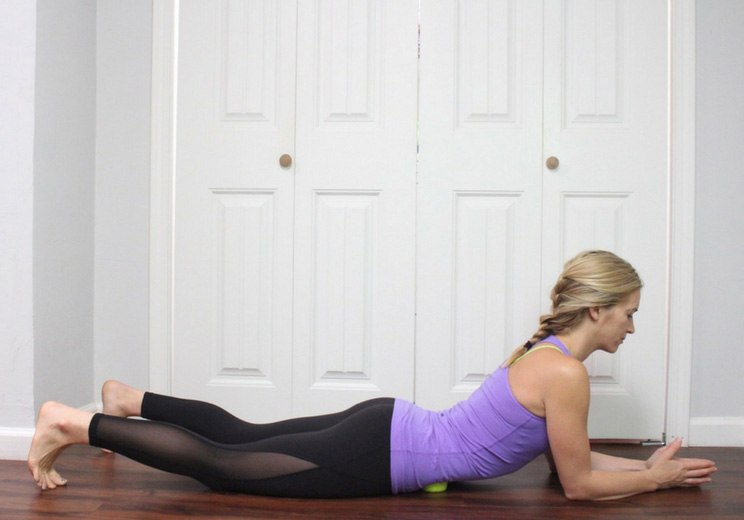
The psoas is directly attached to the lumbar vertebrae. When the psoas becomes tight, it tugs on the lumbar vertebrae, leading directly to lower back pain.
- Kneel on the floor.
- Place the tennis ball out in front of you, then lower yourself down onto the ball, belly down, so that it rests between your belly button and the inside of the pointy part of your right hip bone.
- Prop yourself up with your forearms and let your weight rest on the ball. It should feel as though the ball is pressing up and into your abdomen.
- Take some small, slow rolls forward and back. When you find a tender spot, stop and hold for 20 seconds. After you feel a release on the right side, switch to the left side.
Figure 4 Piriformis Release
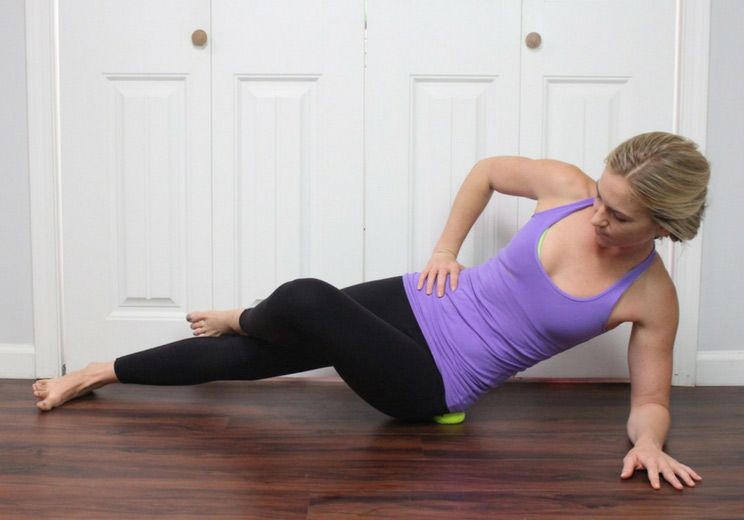
The piriformis is a flat, pyramid-shaped muscle located underneath the gluteus maximus that helps to rotate the hip. When tightened or enlarged, it can entrap the sciatic nerve and other major nerves and blood vessels, often leading to lower back pain and conditions like sciatica (6).
- Place the ball on the floor.
- Position yourself over the ball so that it rests underneath the outer center of your right glute.
- Keep your left leg out straight in front of you. Bend your right leg and cross the right ankle over your left thigh.
- Take small circular movements around the area, pausing for at least 20 seconds every time you find a knot or feel referred pain.
- Repeat on the other side.
Supine Double SI Joint Release
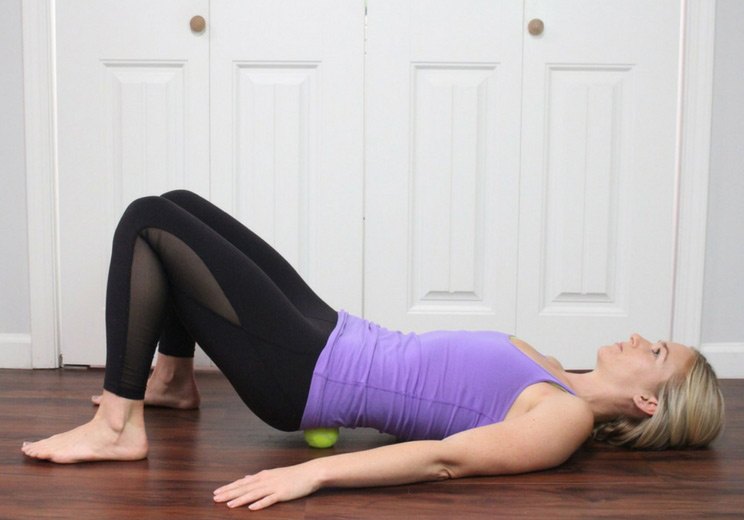
This movable joint, which is part of the pelvis, connects the sacrum to the iliac. This joint tends to become tight in women due to hormones, pregnancy and labor. Dysfunction in the SI joint causes lower back and leg pain (7).
- Lie on your back with your knees bent and feet on the ground.
- Lift your hips and place two tennis balls beneath your pelvis, about 2-4 inches apart.
- Lie still for 60 seconds. You can keep your knees bent, or for more sensation, straighten your legs out in front of you.
- You can play with moving the balls around to target different muscle fibers and find different points of tension.
Thoracolumbar Fascia
This fascia covers the entire lower back area and consists of an anterior, middle, and posterior layer. It is extremely important for coordinated movement and stability. Excessive strain, overuse, repetitive stress and poor posture can bring on thoracolumbar pain in the low, mid or upper back.
Thoracolumbar Floor Release
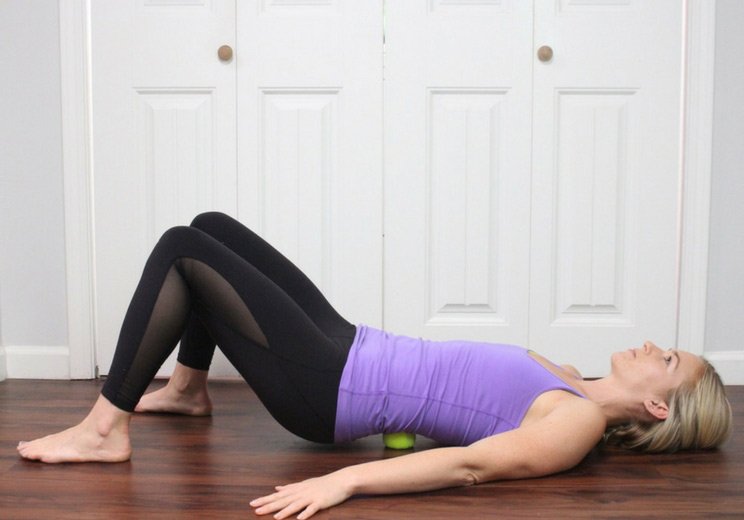
- Sit on the floor and place the tennis ball behind you.
- Use your hands to lower your back onto the ball so that it rests on one side of your back, directly above the hip bone. Bend your knees and place your feet on the floor.
- Use your feet to roll the ball up your back slowly, pausing when your feel a tight spot.
- Repeat on the other side of your spine.
Thoracolumbar Wall Release
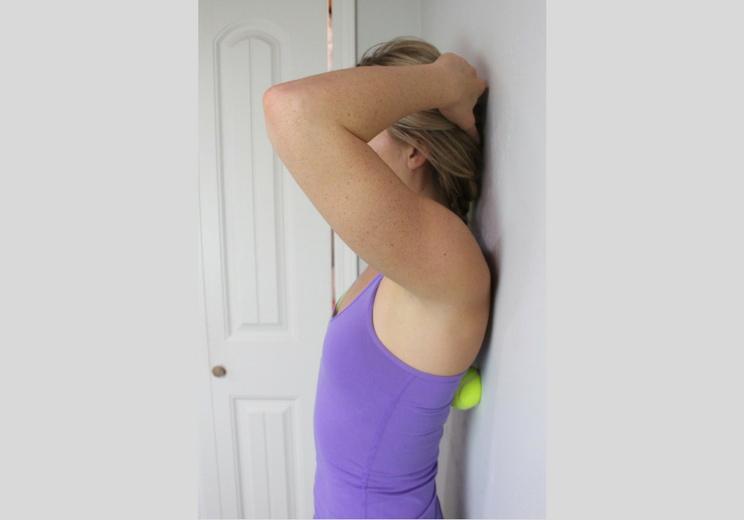
- Stand next to a wall.
- Place the ball against the wall, then lean your back against it so that it rests right below your ribs on one side.
- Take small circular rolls, pausing for 20 seconds whenever you find a knot.
- Repeat on the other side.
Mid and Upper Back Pain
Trapezius
The trapezius is a large, diamond-shaped muscle that starts from the top of the neck and goes to the mid-back. Trigger points of this muscle can cause pain to the side of the neck, jaw, and face, and can produce a throbbing headache in the temples.
Lower Trapezius Wall Release
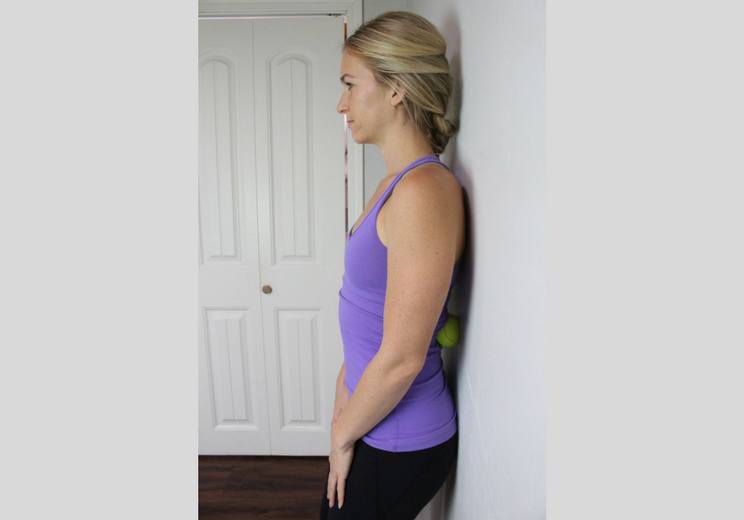
- Stand by a wall.
- Place the ball against the wall and lean back against it so that it rests below one of your shoulder blades.
- Take small rolling circles until you find a point of tension. Hold for at least 20 seconds, and then continue rolling around the area until you find another spot.
- Once you no longer find any points of tension, repeat on the other side.
Mid-Trapezius Supine Rollout
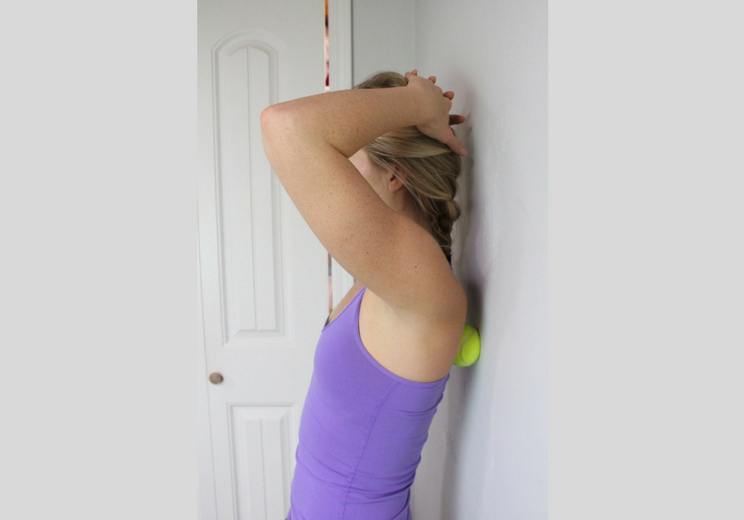
- Sit on the floor with your knees bent and your feet flat on the ground.
- Place the ball behind you and slowly lower your back onto the ball, adjusting it so that it rests right inside of the top of your right shoulder blade.
- Slowly roll the ball down the inside of your right shoulder blade, stopping for at least 20 seconds whenever you find a knot.
- Once you get to the bottom of the shoulder blade, slowly roll all the way back up, stopping when you find a point of tension.
- Repeat on the other side
Upper Trapezius Standing Wall Rollout
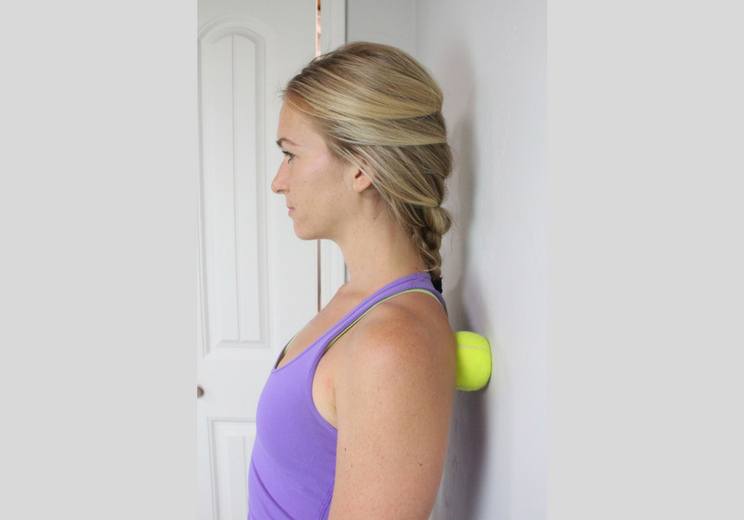
- Stand with your back towards a wall.
- Place the ball between your back and the wall so that it rests on your upper trapezius, between your shoulder and your neck.
- Take slow movements side-to-side and hold for 20 seconds when you feel a tight spot.
- Repeat on the other side.
Latissimus Dorsi
Your latissimus dorsi is a large triangular muscle that encompasses the lumbar region and half of the thoracic region of the back. If you have pain in your mid-back or shoulder blade area, chances are that it could stem from tight lats. Tight lats can also lead to stomach and lower back pain, and even pain down the arms and into the fingers.
Sideways Lying Floor Release
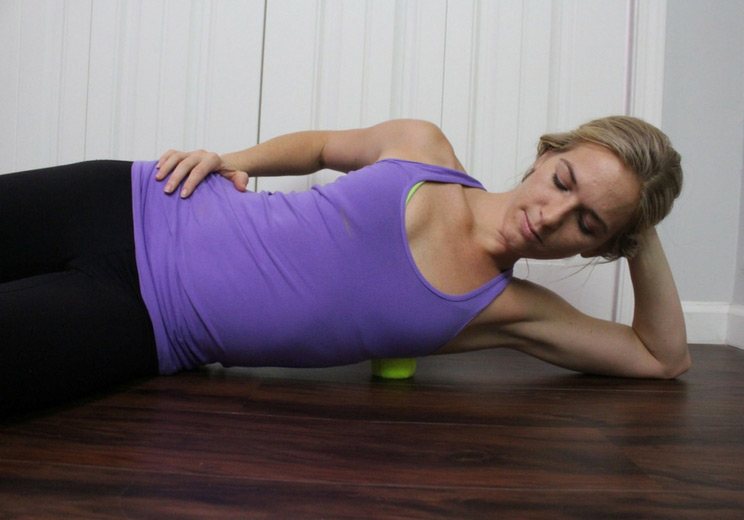
- Place the ball on the floor.
- Sit next to the ball and then lower yourself down so that you are lying sideways on it, with the ball resting below the armpit, over the ribs.
- Take small circular movements, pausing when you find a tight spot.
- Repeat on the other side.
Standing Wall Release
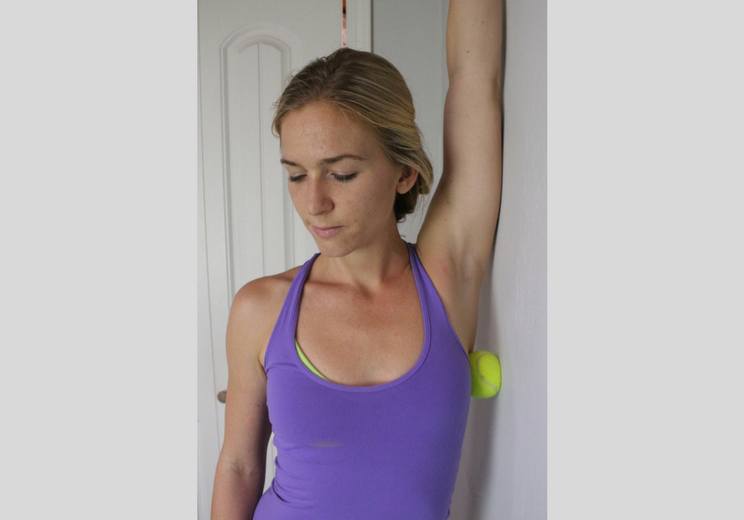
- Begin standing sideways next to a wall.
- Walk your hand up the wall and place the ball between your torso and the wall so that it rests underneath your armpit.
- Take small rolling movements, pausing whenever you find a knot.
- Repeat on the other side.
Rear Deltoid
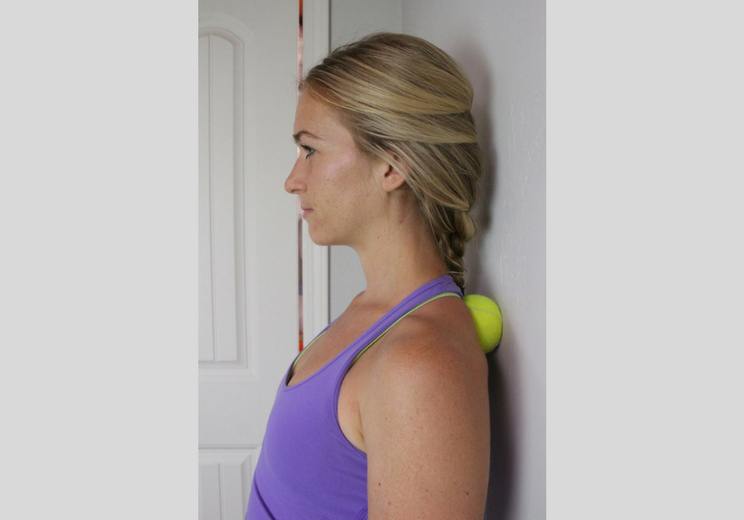
Trigger points in the deltoid can lead to pain between the shoulder blades, pain in the front of the deltoid, and even upper arm pain.
- Stand with your back towards a wall.
- Place your tennis ball between the back of your right shoulder and the wall. It should rest right above the right armpit.
- Take slow movements to roll the ball around the area. Hold for 20 seconds whenever you find a tight spot or feel referred pain.
- Repeat on the other side.
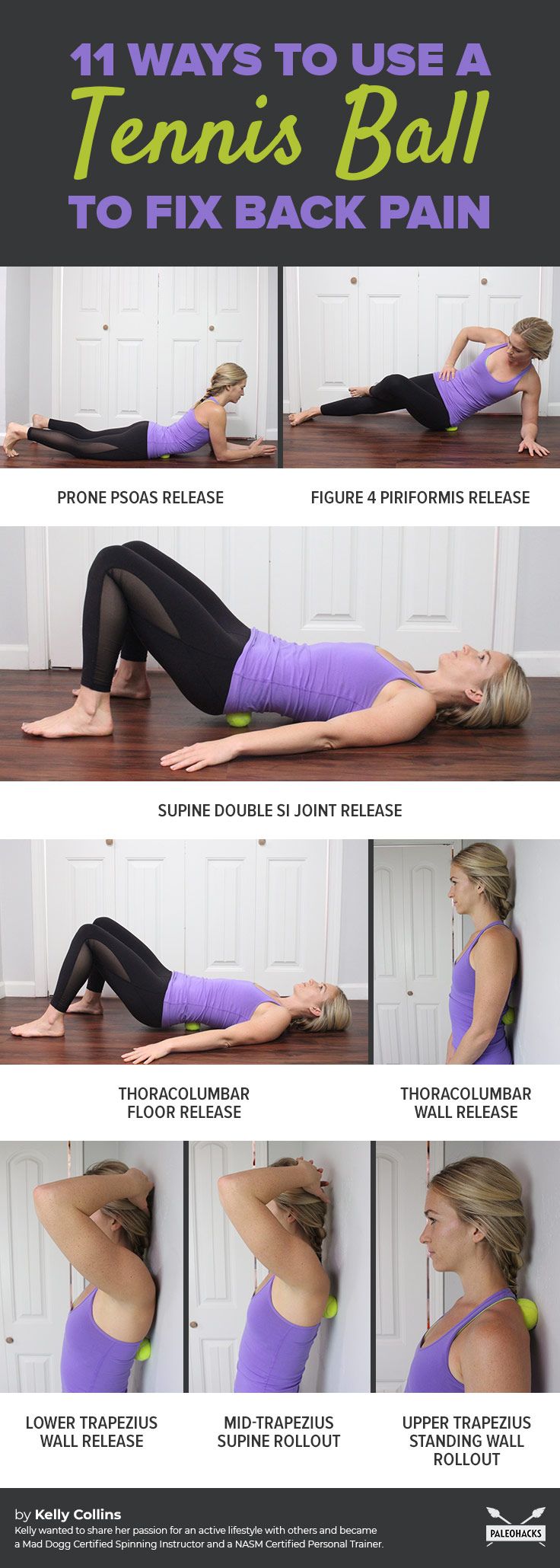
(Your Next Workout: 12 Ways To Use A Tennis Ball To Release Tight Hips)


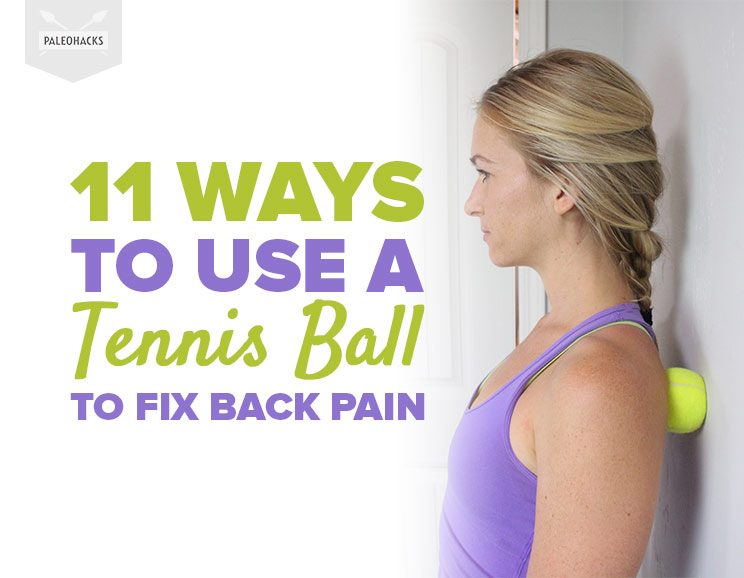
 Paleo vs Keto: Similarities, Differences + Which Is Best For You
Paleo vs Keto: Similarities, Differences + Which Is Best For You
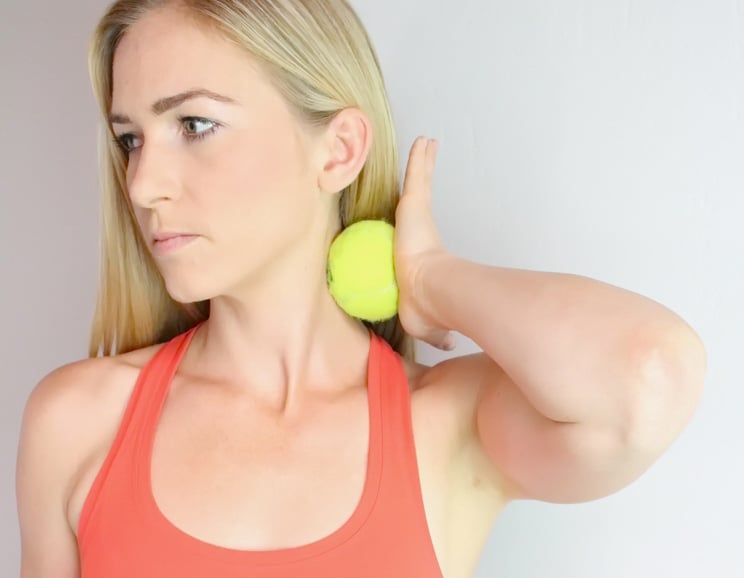
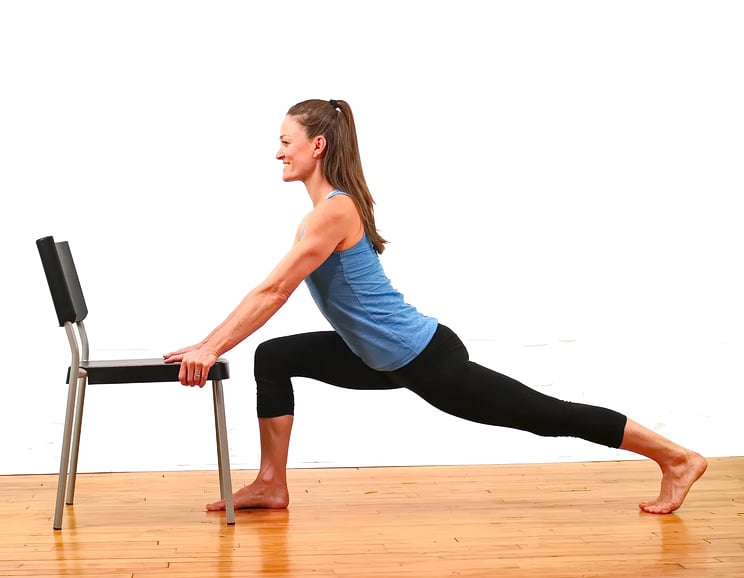

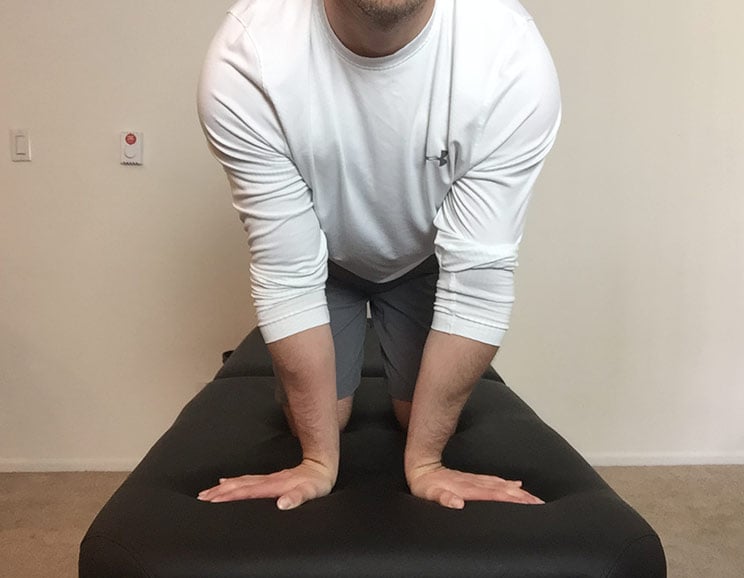
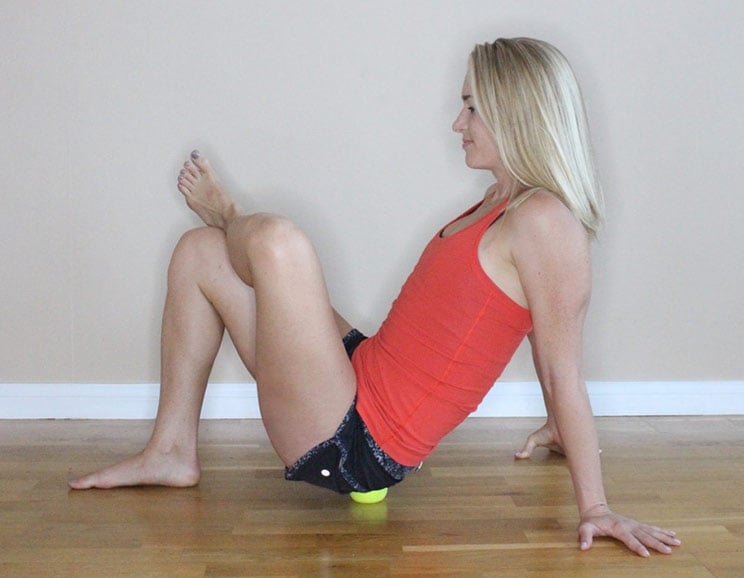
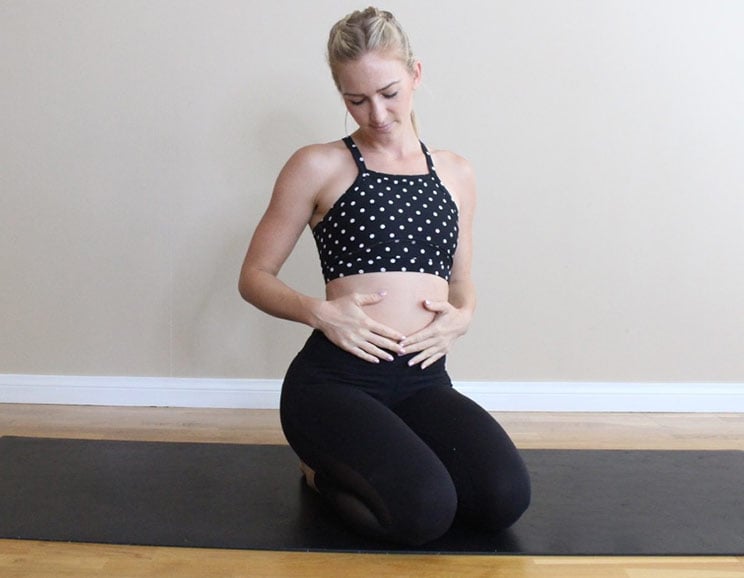
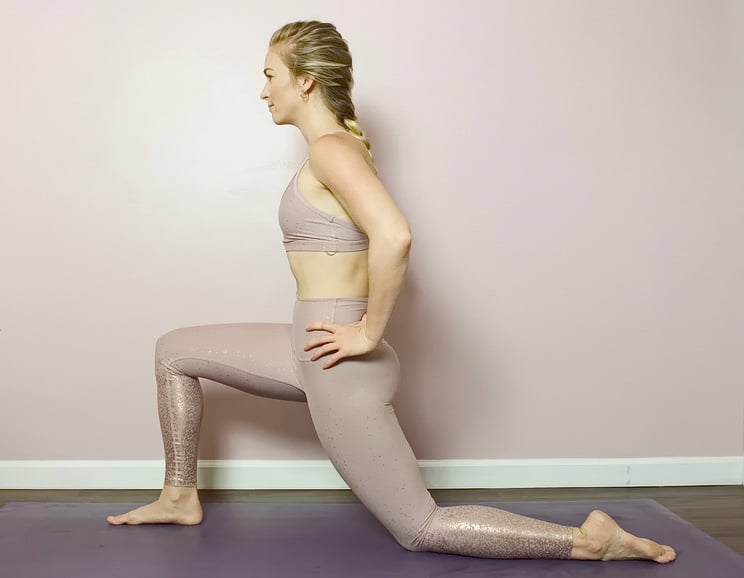
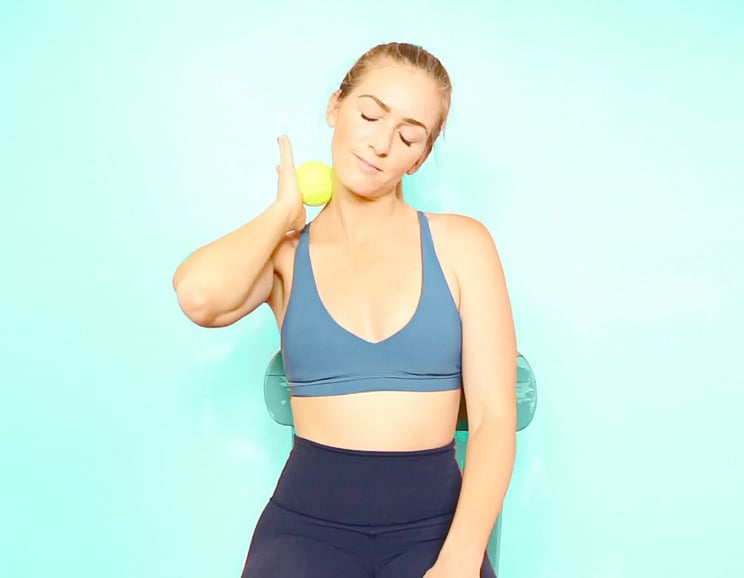
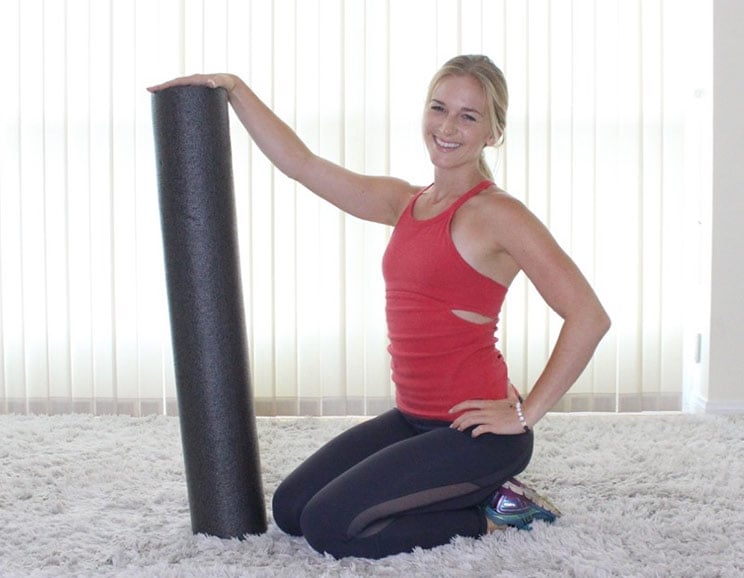
Show Comments